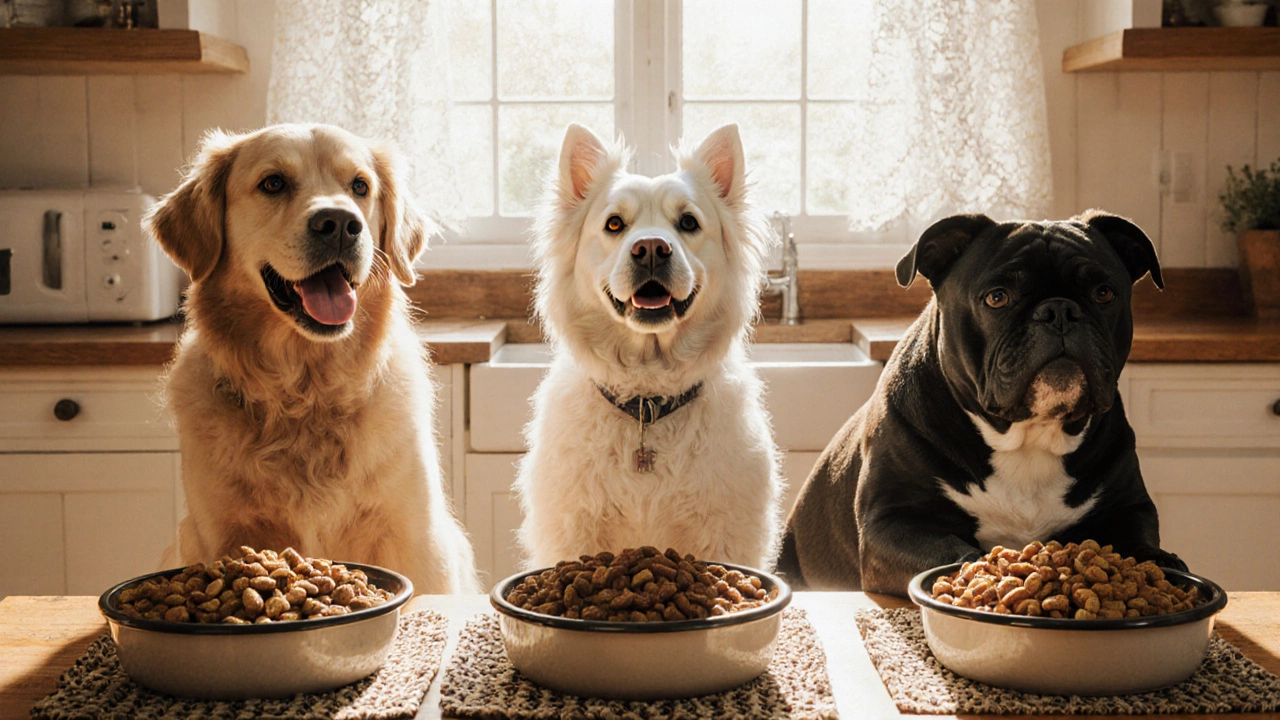Grain-Free Dog Food: What You Need to Know
If you’ve stared at a bag of dog food and the words “grain‑free” jumped out at you, you’re not alone. Many owners think ditching grain will automatically make their dog healthier. The truth is a bit messier – grain‑free can be great for some pups, but it can also cause problems for others. This guide breaks down the main reasons people choose grain‑free, the risks you should watch for, and how to pick a formula that actually helps your dog.
Why owners go grain‑free
First off, most owners are looking at a specific issue. Some dogs have food allergies or intolerances that show up as itchy skin, ear infections, or upset stomachs. In those cases, removing common allergens like wheat, corn, or soy can clear up the symptoms. Grain‑free recipes often replace those carbs with potatoes, peas, or lentils, which can be easier on a sensitive gut.
Another big driver is the hunting‑dog myth. A lot of older marketing claimed that working dogs need a high‑protein, grain‑free diet to stay lean and fast. While extra protein can help active dogs, the grain part isn’t the main factor. Regular, balanced kibble can work just as well for a field dog if it meets the energy needs.
Lastly, many owners simply like the look of a grain‑free label. It feels modern, natural, and like they’re doing something special for their pet. That feeling can be a good start, but it’s worth checking what’s actually inside the bag before you buy.
Potential downsides and safety tips
Grain‑free doesn’t automatically mean healthier. Recent studies in the US linked some grain‑free recipes – especially those high in peas, lentils, or chickpeas – to a heart condition called canine dilated cardiomyopathy (DCM). The exact cause is still under review, but the warning is clear: not every grain‑free formula is safe for every dog.
To stay safe, start by looking at the ingredient list. If the first three ingredients are all legumes or potatoes, the protein content may be lower than you expect. Check the guaranteed analysis for protein, fat, and fiber percentages that match your dog’s size and activity level.
Ask your vet before making a switch, especially if your dog is a large breed, has a history of heart issues, or is already on medication. Some vets recommend a trial period of two weeks: feed the new grain‑free food exclusively and watch for changes in energy, coat quality, and stool. If anything looks off, revert to the old diet and discuss alternatives.
Another tip is to mix things up. You don’t have to feed one brand forever. Rotating between a high‑protein grain‑free kibble and a well‑balanced grain‑included formula can give your dog a broader nutrient base and reduce the risk of any single ingredient causing trouble.
Finally, consider homemade or fresh‑food options if you’re comfortable with meal prep. A simple recipe of cooked chicken, sweet potato, and green beans can provide balanced nutrition without the mystery of commercial processing. Just make sure you follow a vet‑approved recipe or use a reputable pet nutrition calculator.
Bottom line: grain‑free can be a good choice for dogs with proven grain sensitivities, but it isn’t a one‑size‑fits‑all solution. Look past the label, check the nutrient profile, and involve your vet in the decision. With the right information, you’ll find a diet that keeps your dog happy, active, and healthy.
- Morgan Ainsworth
- 0 Comments
What Dog Food Do Dogs Love the Most? Top Picks & Why
Discover which dog foods dogs love most, why they choose them, and a side‑by‑side comparison of the top palatable formulas for every breed.
View More
